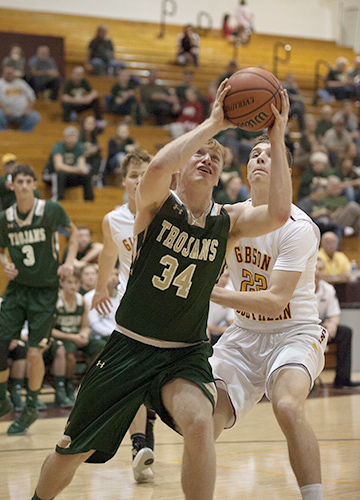Stressing post fundamentals in your program
So many factors are critical in having a team that’s competitive, game-in and game-out. But perhaps none are more important than being fundamentally strong in the post. This doesn’t necessarily mean that you need to have the biggest players in the world, but your team needs to practice solid post fundamentals for your team to be hard to beat.
 If your team’s post play is solid, it helps your rebounding. Your shooting percentages increase, your defense becomes stronger and your team gets to the free-throw line more often.
If your team’s post play is solid, it helps your rebounding. Your shooting percentages increase, your defense becomes stronger and your team gets to the free-throw line more often.
Mental/physical preparation
1. Develop new skills. Great post players must develop these mental and physical skills:
- Must be smart.
- Must be physically tough.
- Must want the ball.
- Must be a competent free-throw shooter.
- Must be an aggressive rebounder.
2. Little things count. Great post players realize that the little things they do before they get the ball are the keys to their success.
Before getting the ball
The key ingredient to successful post play is what your player does before he or she receives the ball. Post players encourage or discourage perimeter players to pass the ball into the post with their positioning, stance, contact and catch of the ball.
3. Post positioning. In teaching your post players basic fundamentals, stress that in order to get good post positioning they must:
- Set up above the block.
- Sprint from your defensive end to the offensive block in four seconds.
- Use a V-cut to come from the weak side to the ball-side block.
4. Stance. Al McGuire once said, “Offensive post play is taking up space; defensive post play is taking away space.”
Teach your players to get big in the post by assuming a wide and low stance. Your post players must take up space. This stance is analogous to “sitting in a chair.”
5. Post contact. The most contact in the game takes place in the post, and a referee is always stationed in a good position to see this contact.
- Your players must push to establish territory or they cannot succeed in the post.
- Teach players never to use their arms to push. This is easily observed by the official and will be called for a foul.
- Smart post contact is simply pushing the defender in the direction he or she is guarding your player. The key to contact is to push from a wide and low stance with the hips and shoulders — never your arms.
6. Post target. Teach players the four ways they can be guarded in the post:
- High side denial
- Baseline side denial
- Front
- Behind
7. Showing a target. Show your players that the target is predicated on how they are guarded.
High-side denial
- Stay in a low and wide stance.
- Push the defender higher; one to two steps.
- Try to hook the defender’s front foot as your player pushes with the hips and shoulders.
- Teach players to call for a bounce pass with the baseline hand open to the passer and fully extended.
Baseline side denial
Teach the exact same technique as above, except have players push the defender toward the baseline.
Front
- Face the baseline.
- Put both arms up toward the baseline with hands open to the passer.
- Bump the defender out one or two steps. Don’t release contact on the pass until the ball is almost directly overhead.
- As another option, direct the wing passer to pass to the point. If this happens, reverse pivot, seal the defender, and be ready to move to the basket for the catch.
Behind
Stay in a wide, low position centered above the block. This makes it difficult for a post defender to move your player out of the box without drawing a foul.









